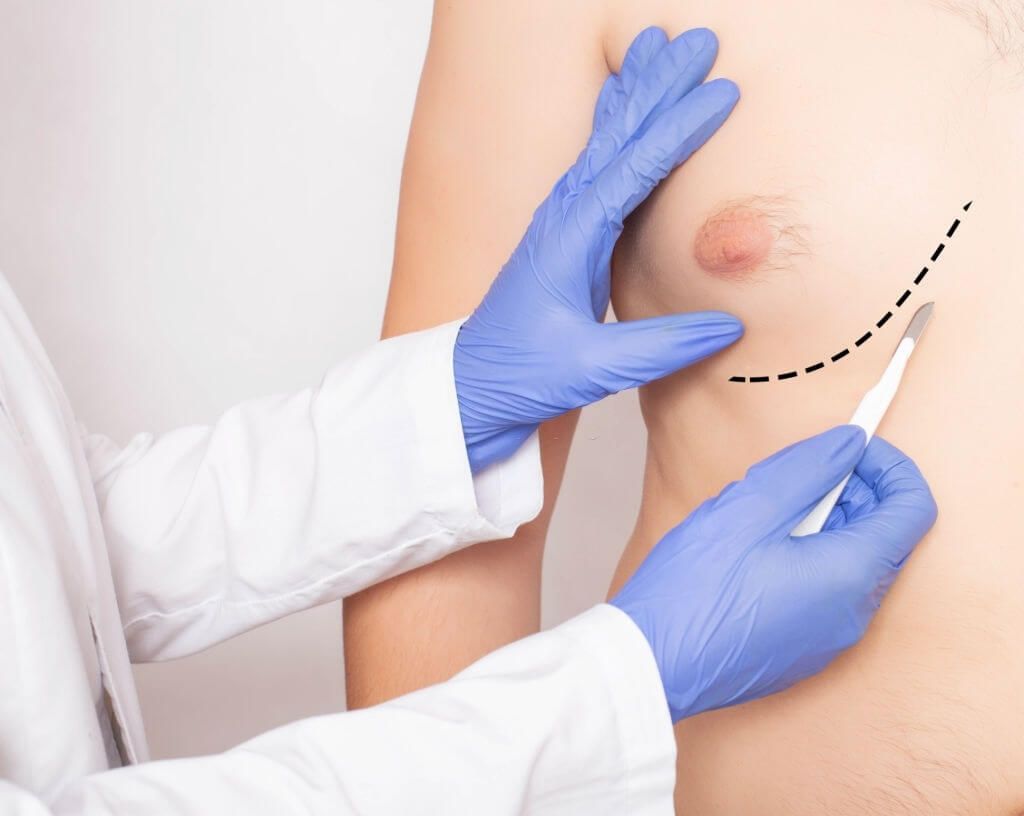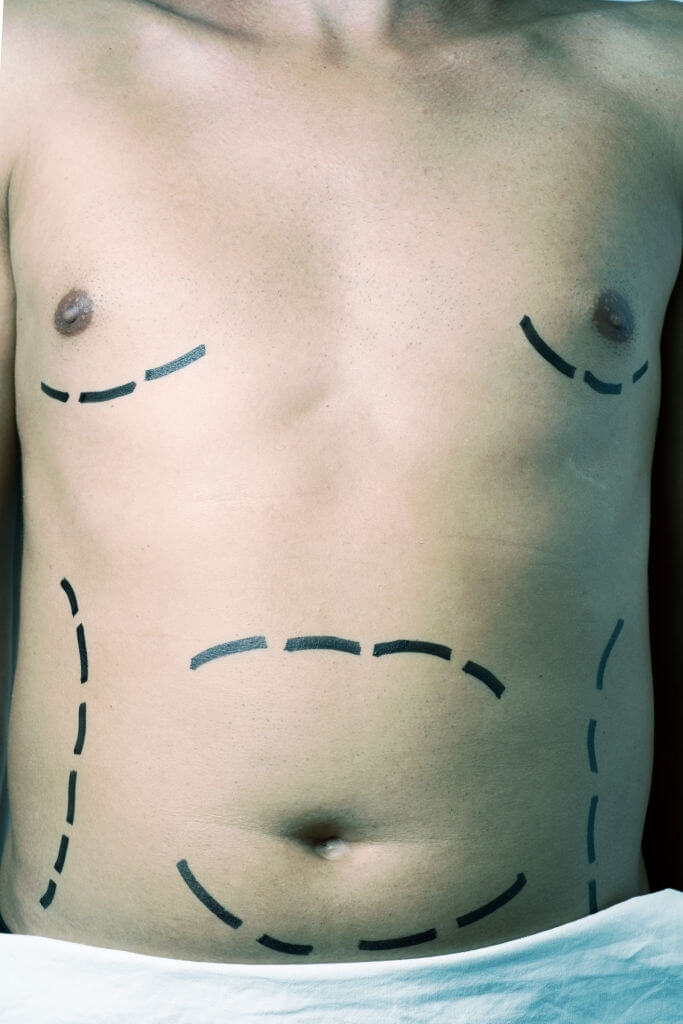
Gynecomastia in medical term means "Woman-like breasts". Gynecomastia affects an estimated 40 to 60 percent of men. Due to hereditary factors, excess unwanted fat deposits, located in the chest area, can cause overdeveloped or woman like breasts in men. For men who feel self-conscious about the apperance of their chest, male contouring for overdeveloped breasts using the liposuction procedure (tumescent method), a recently developed surgical technique, can address this area.
In most of the cases, the cause is unknown. Sometimes it is an imbalance os the sex hormones estrogen and testosterone. But heredity conditions, diseases including certain tumors, chronic diseases and endocrine disorders or certain drugs such as blood-pressure medicines, steroids, marijuana, and anti-depressants may also cause the condition.
Certain lifestyle factors can also contribute to Gynecomastia. Excessive drinking of alcholic beverages can cause Gynecomastia.



You will be given specific instructions, including diet, taking certain vitamins and medications, and stopping cigarette or other smoking for at least one to two weeks prior to your procedure, and during your recovery. You must follow your surgeons instructions carefully. Smoking decreases circulation and impedes healing.
In a typical procedure, an incision is made in an inconspicuous location - either on the edge of the dark skin around the nipple, or in the underarm area. Through the incision, the surgeon cuts away the excess glandular tissue, fat and skin from around the areola and from the sides and bottom of the breast. If your surgeon has determined that liposuction will be used in conjunction with excision to remove excess fat, the cannula can be inserted through the incisions. In a reduction involving greater amounts of excess tissue, larger incisions may be necessary and can result in more noticeable scars.
If your surgeon has determined that your Gynecomastia consists primarily of excessive fatty tissue, liposuction would be an appropriate surgical technique for removal of this tissue. At the edge of the areola, the dark skin that surrounds the nipple, a very small incision, less than a half inch in length is made. Depending on individual factors and preferences, the incision may be made in the underarm area. A cannula, which is a slim, hollow tube attached to a vacuum pump, is inserted into the incision. Your surgeon moves the cannula through the layers beneath the skin, breaking up the fat and suctioning it out.
In cases where large amounts of tissue have been removed, it may be necessary for excess skin to be removed so that the remaining skin will adjust to fit the new breast contour.
Occasionally, a small drain will be inserted through a separate incision to relieve excess fluids. Upon completion, the incisions are usually covered with a dressing and the chest may be wrapped with an elastic bandage to hold the skin firmly.
It is normal to feel some discomfort for a few days after your procedure. This can be controlled with medication prescribed by your surgeon. You should arrange to be driven home after your surgery and have someone to help you manage for a day or two if necessary.
Bruising and swelling may make it appear that there's been no improvement in your condition initially. You will most likely be told to wear an elastic pressure garment around the clock for a week or two, and for several weeks longer at night. The extreme swelling will resolve in the first few weeks but it may be three months or longer before your true result is visible.
While you are waiting for this, it is important to begin to resume normal activity. You should walk around on the day of surgery, and return to work within a day or two, as soon as you feel well enough. If you have stitches, they will be removed one to two weeks after the surgery.
You should avoid sexual activity for a week or two, and heavy exercise for about three weeks. You must avoid any activity or job that risks a blow to the chest area for at least a month. Avoid exposing scars to the sun for at least six months.
